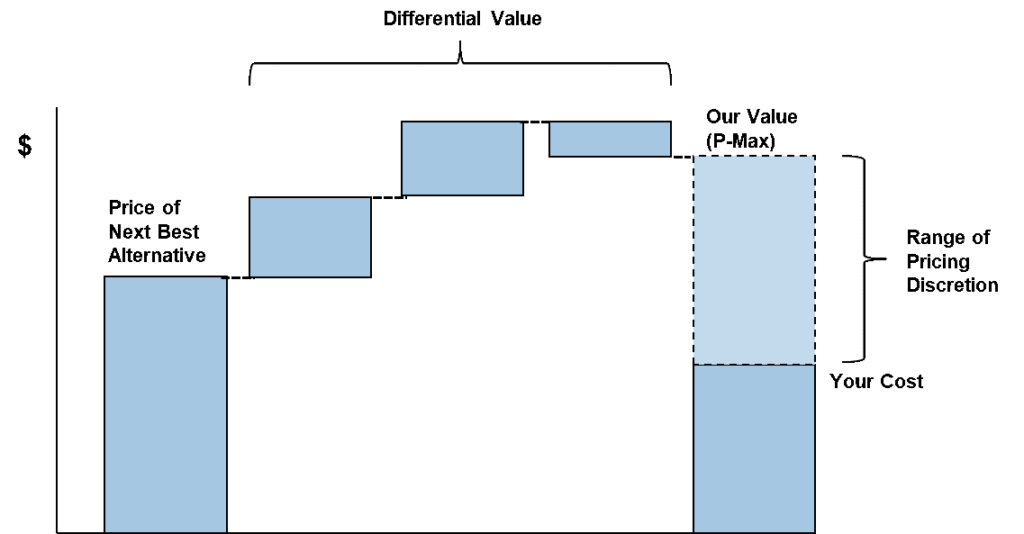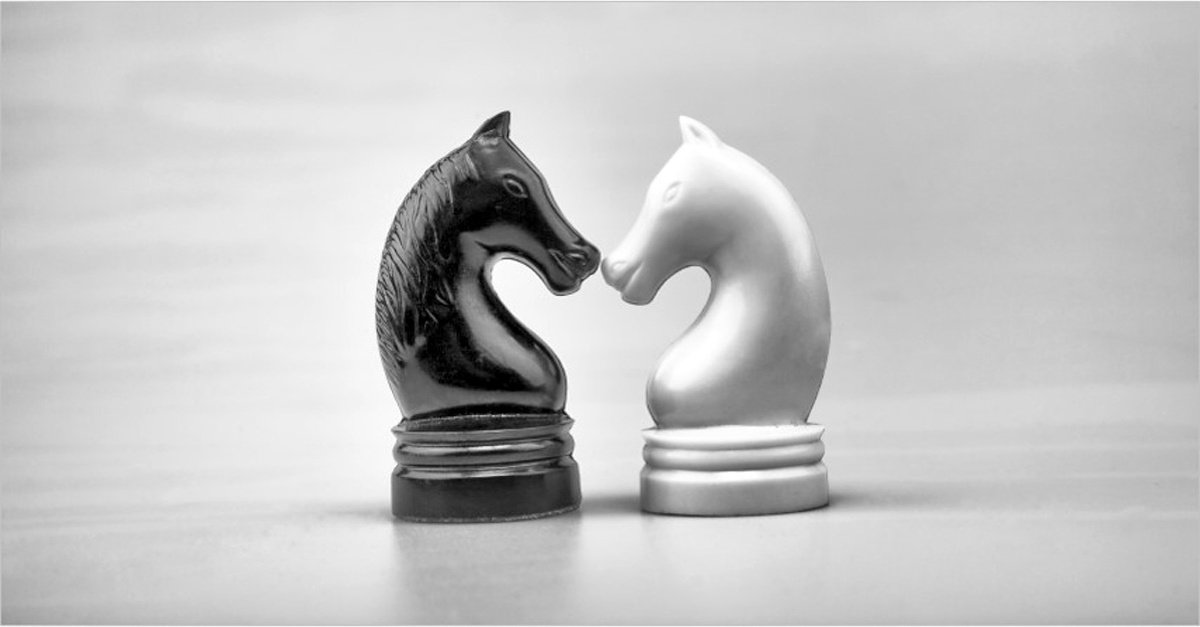I’ve heard it all when it comes to pricing strategies. Clients say they use a premium pricing strategy, or penetration pricing, or (pick your own) pricing strategy. But really… what is the one and only goal of pricing when you want to make a profit?
It is to maximize earnings over the life of the offering (your share of the value pie) based on the value it delivers to your customers (your customer’s share of the value pie). If you accept this premise, then you must conclude that value pricing is the only legitimate pricing strategy.
Even when clients say they use value pricing, scratching the surface makes it clear that they really aren’t pricing to value. It’s easy to confuse capturing a 10% premium on their offering with value pricing. If you can’t answer the question, “How much of the total value created does that 10% represent?” then you really aren’t pricing to value. Even if you do know how much of the value you are capturing, ask yourself, “Why that amount? Should it be higher? Should it be lower?”
7 Steps to Maximize Earnings
Consider following these steps to develop a value pricing strategy that optimizes your earnings and delivers more customer value. Although you will never have perfect information, these steps will give you a better chance of finding your optimal price.
1. Identify your unique differentiators, both positive and negative.
The first step is to identify and document all your differentiators relative to the customer’s next best alternative, which is often your competitor. This includes everything you do better and everything you don’t do well.
All that matters in value pricing are the things that are different. If you do something and your competitor does it just as well, then it does not create value relative to the customer’s next best alternative. Therefore, a customer will not pay you more for it. If you are brutally honest in this step, you may find that the list is far shorter than you would like.
2. Estimate the total value created by your differentiators for each customer segment.
Once you have your list of differentiators, evaluate how each item could create positive and negative value for customers within a given segment. I define a segment as a group of customers with the same needs who will value your differentiation in the same way.
In order to use the value you create to set your price, that value must be measurable in currency. You must be able to point to the line item in your customer’s financial statement where that value will be realized. This is hard work, but it is the only way to optimize price.
3. Calculate the maximum price that a customer should be willing to pay.
Once you quantify all of the value dimensions in currency, you can calculate the maximum price that a customer in that segment should be willing to pay using this equation:

In this equation, Ps is your maximum price. Pnba is the price of the customer’s next best alternative. Vs is the incremental value that your differentiators create for a customer. And, Vnba is the incremental value that the next best alternative creates for a customer based on your weaknesses.
This then establishes your maximum price, but the goal is not to maximize price, but to set price to optimize earnings.

The next steps revolve around finding the optimal price within the range of pricing discretion.
4. Evaluate the sustainability of your differential value.
How long can you sustain your differential value within the range of pricing discretion? This can be impacted by the following:
- The next best alternative’s ability to lower price, which lowers your maximum price
- A competitor’s ability imitate or copy your differentiation
- How long you will be able to maintain your differentiation
The closer you price to the maximum, the more sensitive your price becomes to a competitor’s price drop and the more value you will need to pass through to the customer. And, the easier your differentiation is to copy, the more value you will need to pass through to the customer.
5. Evaluate the customer’s price sensitivity.
I have clients that refer to certain segments of customers as “price sensitive.” I would argue that ALL customers are price sensitive. The difference is that some customers recognize the value in what you offer, and others don’t.
The price sensitivity I’m talking about here is slightly more nuanced. One thing to consider is any established price expectation that a customer may have around your offering. If they are accustomed to paying $100 for something similar to what you offer, it will be harder to convince them to pay $1,000 for your offering, even if the value justifies it. That’s not to say they won’t pay $1,000 if you can successfully demonstrate the value, but it will be more difficult.
Another thing that plays into price sensitivity is the relationship between their investment in your offering and their total cost structure. If your offering is only a small percentage of their total budget, then you can likely capture more of the value. Conversely, if your offering accounts for a significant amount (20% or more) of their budget, they will be much more price sensitive and you will likely need to share more of the value.
6. Evaluate how your price decision will impact your other offerings.
It’s important not to maximize the earnings from one offering in a vacuum, especially if you already sell other offerings to customers in the same segment. Even if everything else indicates that you can price to capture a significant part of the value, if you are already making significant margin on other offerings in the same segment, you may need to share more value with those customers.
Seek to maximize your earnings based on total price. If customers perceive one price to be high, they can decide to take their combined business elsewhere. You will need to take that potential loss of business into account when setting your price.
7. Set the price that will maximize the long-term earnings.
Using all the insights gained from steps 1 through 6, you are now ready to set the price that will maximize the earnings impact over the life of the product. You will not have perfect information on any of these factors but by considering all of them, you can get closer to the optimal price and determine how to divide the value pie between you and your customer.
The more some of these factors that work against you, the more value you will need to share with your customer, possibly even 80% or more. If you have a patent protected offering that constitutes a small percentage of the customer’s total spend, then you may be able to capture 80% or more of the value.
Conclusion
Despite the formulas and analyses, there is still a lot of art in pricing. Data, market conditions and other factors will be continually changing. By following these steps, you can put some science back into pricing and come closer to maximizing earnings and your share of the value pie.

Resources
Connect with Darrin on LinkedIn.
Join the Value Selling for B2B Marketing and Sales Leaders LinkedIn Group.
Visit the ROI Selling Resource Center.














